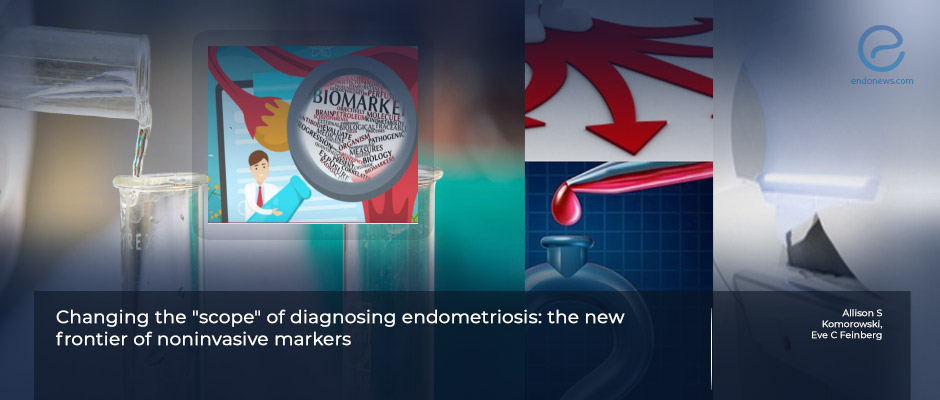Current status of non-invasive biomarkers for endometriosis
Mar 5, 2024
Latest developments on non-invasive biomarkers for endometriosis diagnosis are reviewed
Key Points
Highlight
- Despite extensive efforts, currently, there is no single reliable biomarker that can accurately diagnose the condition with both high sensitivity and specificity.
Importance
- Diagnosing endometriosis earlier and more accurately is possible with clinicians understanding the emerging biomarkers and imaging techniques.
- Continued research in this area is crucial for improving the diagnosis and treatment of endometriosis-related symptoms and the outcome of endometriosis patients.
What’s done here
- The latest findings related to non-invasive biomarkers in endometriosis diagnosis are summarized.
- The authors evaluated their potential for diagnosing endometriosis and guiding treatment decisions.
Key results
- Various urinary biomarkers including enolase I, urinary vitamin D-binding protein, cytokeratin 19, and histone 4 have shown poor sensitivity and specificity.
- Salivary markers, a microRNA signature in particular might be promising but not yet validated.
- BCL-6 along with its partner protein SIRT1 emerged as a strong endometrial biomarker.
- Glycoproteins like glycodelin-A showed promise but lacked sufficient evidence for widespread use.
- Endometriosis transvaginal ultrasound can diagnose various types of endometriosis.
- Magnetic resonance imaging is highly accurate in detecting deep endometriosis and aids in surgical planning.
- Artificial intelligence may improve diagnostic efficiency for deep endometriosis.
Lay Summary
Laparoscopy has been the gold standard for the diagnosis of endometriosis, however, the understanding of how many people have the condition is limited because not everyone undergoes surgery. The different treatment modalities for patients with unexplained infertility and the invasiveness of the surgical approach prompted a need for non-invasive diagnostic methods.
Komorowski and Feinberg from Chicago, Illinois gave an overview of the present state of non-invasive biomarkers in the February 2024 issue of the journal Fertility and Sterility’s Views and Reviews.
Comprehensive reviews on various noninvasive markers for endometriosis, including endometrial, blood, urinary, and salivary markers, as well as advanced imaging techniques like ultrasound and MRI have been conducted. The authors state that several potential urinary markers showed poor sensitivity and specificity for endometriosis diagnosis. Salivary markers, particularly a microRNA signature, have shown promise in early detection, but external validation is still pending.
Only a few endometrial markers such as protein gene product 9.5 and CYP19, showed limited sensitivity and specificity for diagnosing endometriosis. It is also discussed that the BCL-6 protein has emerged as a prominent endometrial biomarker with high clinical utility. It has been shown that its overexpression correlates strongly with endometriosis, with a high positive predictive value. Additionally, its partner protein, SIRT1, may enhance the diagnostic accuracy of BCL-6. The authors add that further validation is required to determine their clinical significance conclusively. Gibbons et al. provided a thorough review of blood biomarkers for endometriosis and found that glycoproteins like glycodelin-A and cancer antigen-25 show promise but lack sufficient evidence for widespread use. They also discuss the potential of blood microRNA signatures and genetic studies, noting that biomarkers are still in the discovery phase.
Imaging techniques like ultrasound and magnetic resonance imaging (MRI) were also investigated. Endometriosis transvaginal ultrasound can diagnose various types of endometriosis, but it is noted that its accuracy depends on the clinician's expertise. MRI is highly accurate in detecting deep endometriosis and can aid in surgical planning, particularly in identifying the involvement of the bowel and pelvic organs. Additionally, there's potential for artificial intelligence to improve diagnostic efficiency in detecting deep endometriosis.
The authors conclude by saying that while there are many potential noninvasive markers for endometriosis, more research is needed to validate their accuracy and reliability.
Research Source: https://pubmed.ncbi.nlm.nih.gov/38104885/
endometriosis biomarker non-invasive BCL-6 SIRT1 eTVUS MRI

